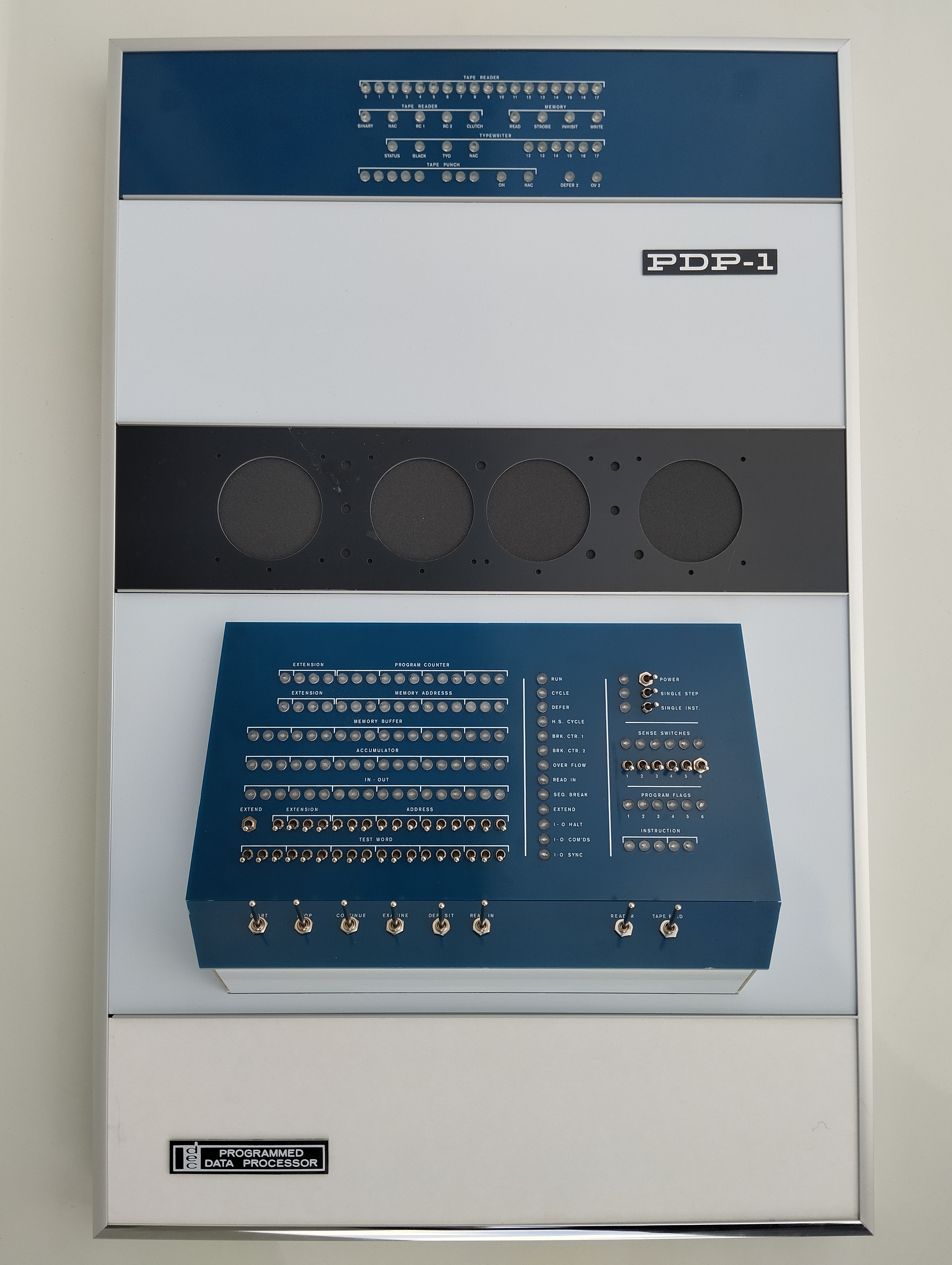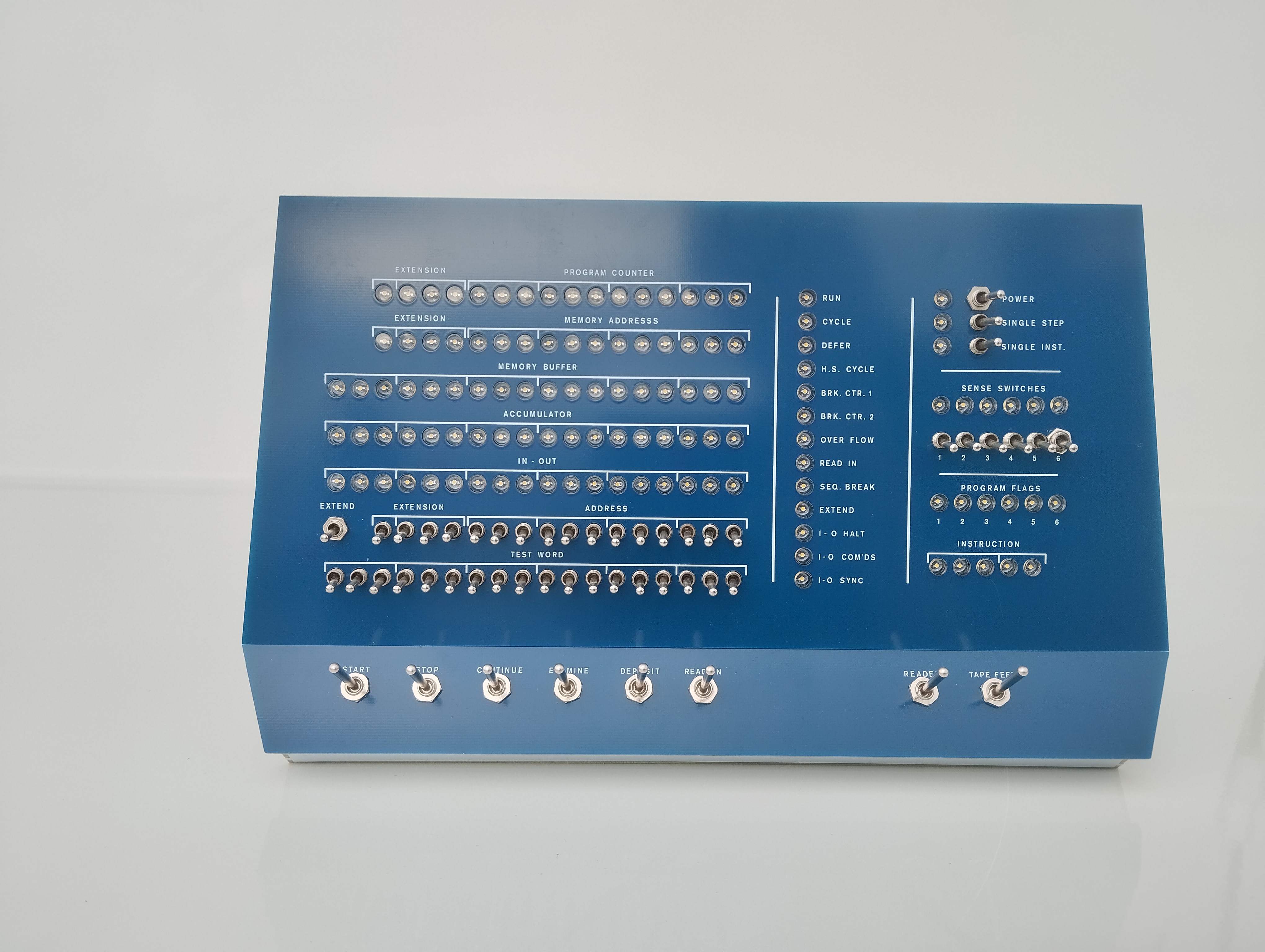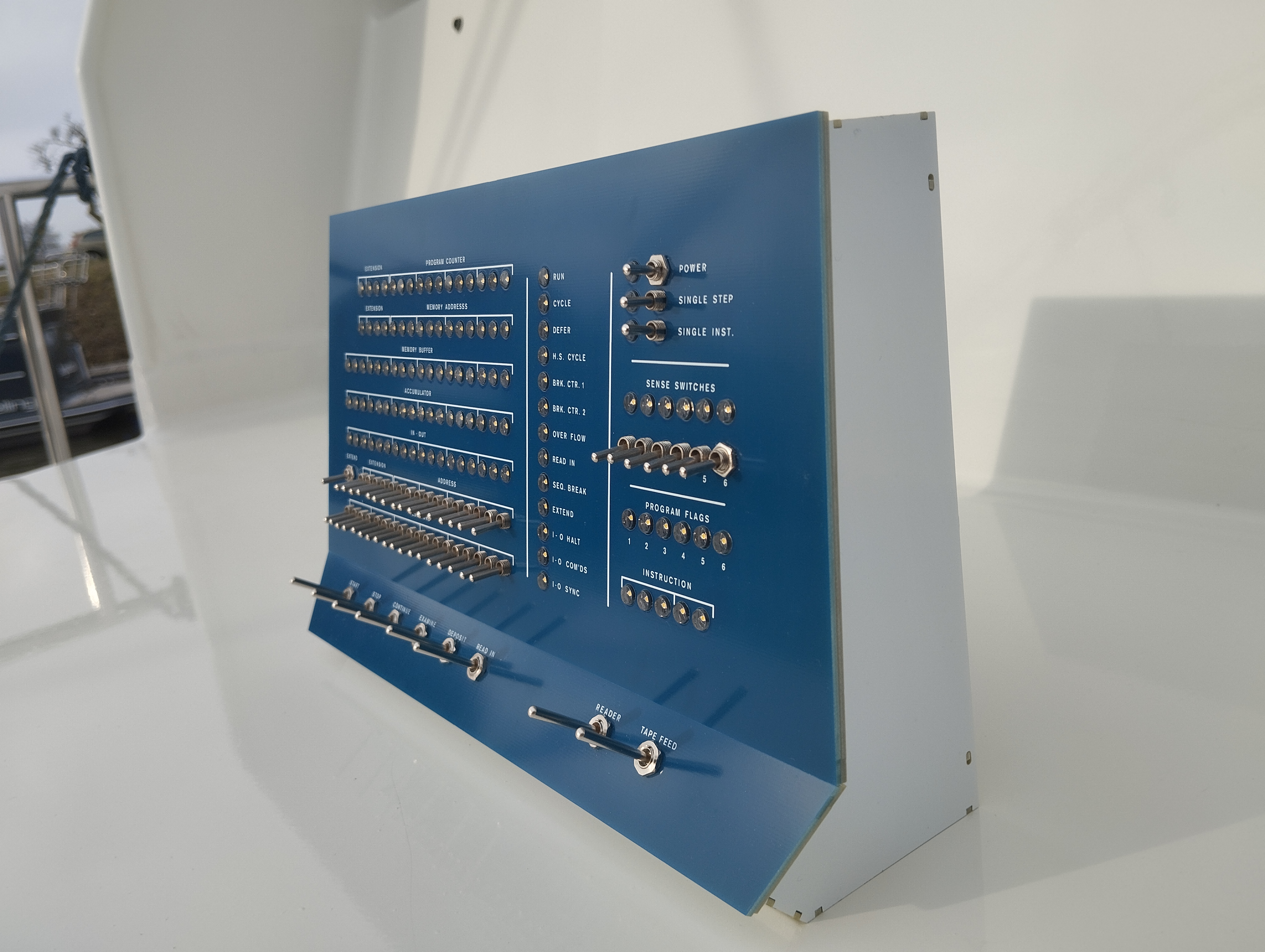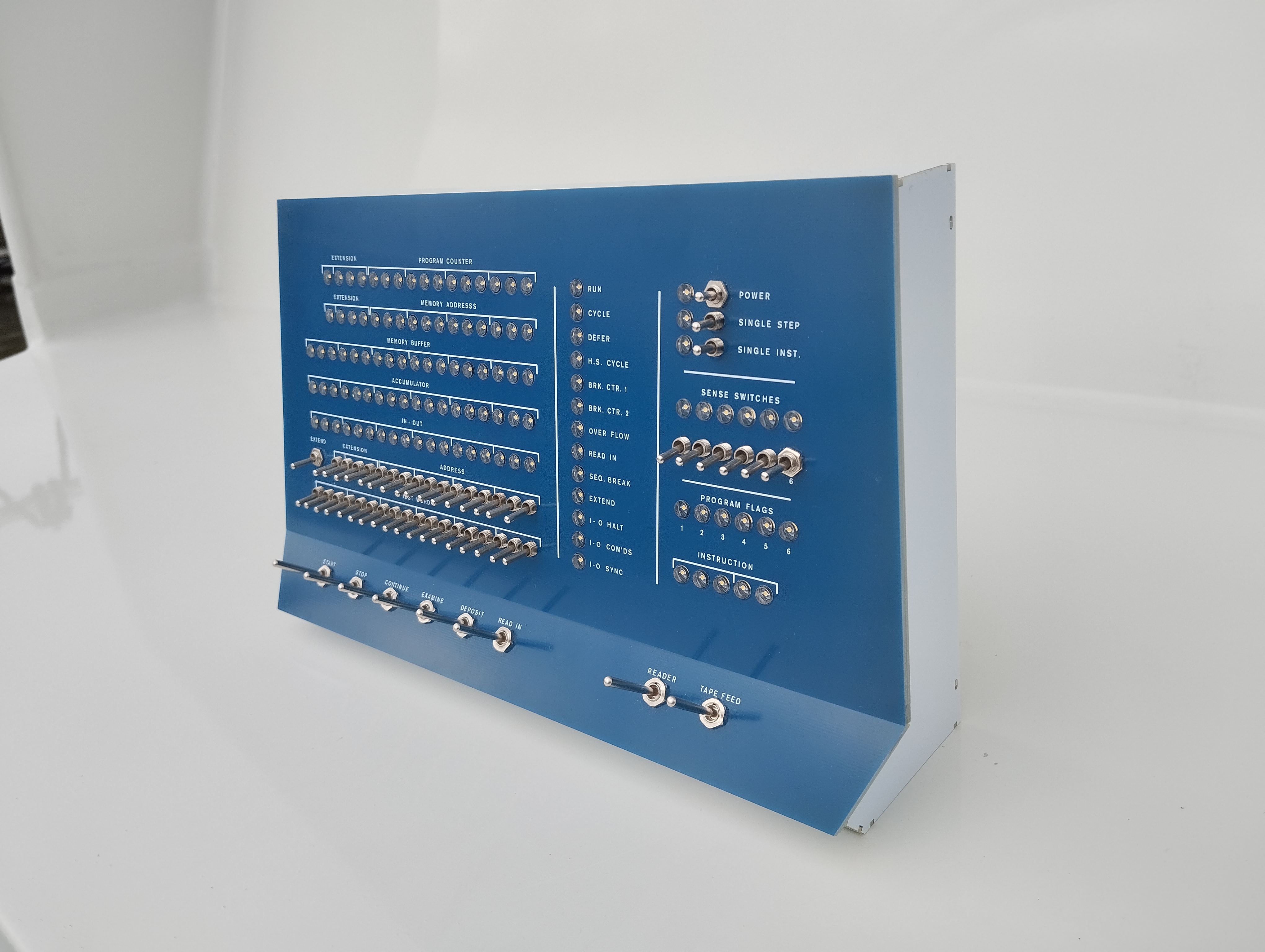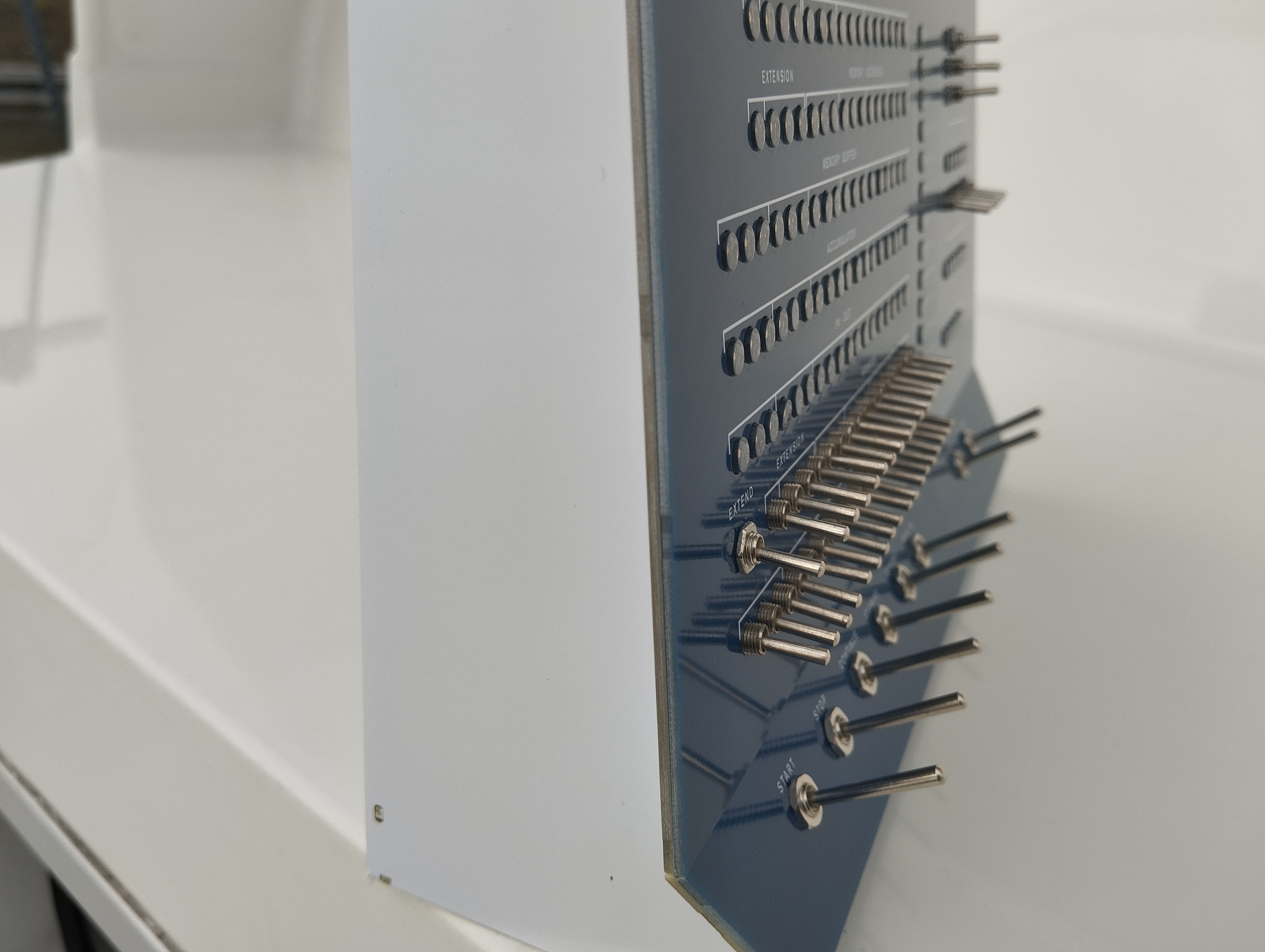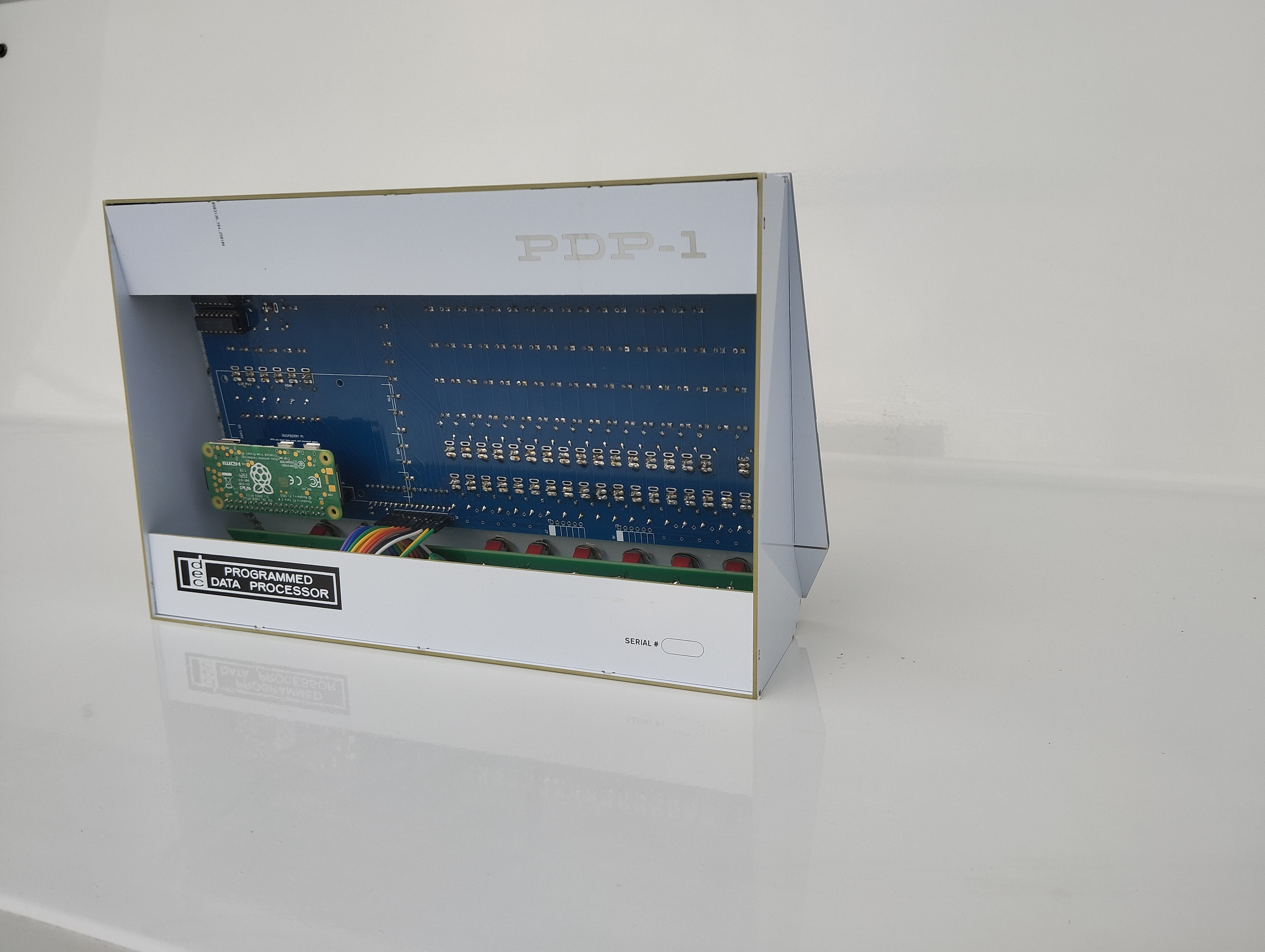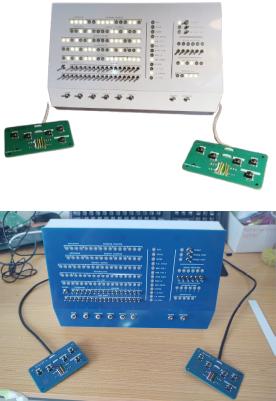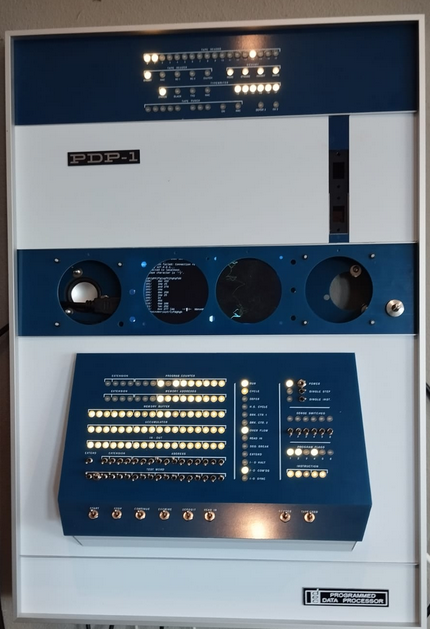Details of our two PiDP-1 replica versions
For the
Console version of our replica, we chose to model it on the early 'Console' versions that DEC published photos of. Sadly, no Console PDP-1 survives. But as the front panel was identical to that mounted on the Rack machines, we are in safe territory here. We do admit we made the case about an inch deeper, because our Console is supposed to stand on a table - not be screwed down to it. And you do not want the front panel to topple over when you press on its switches!
The
Rack version is modeled after the PDP-1 at Lawrence Livermore National Laboratories. Partly because that was by far the most fully-specced PDP-1 ever delivered, and came with built-in speakers. As early electronic music and the PDP-1 are quite a topic, that was an attractive option. Recommended:
George Michael's history of the Livermore PDP-1.
It also allowed us to tuck in the option of two small 'hidden' display slots in the speaker frame's center holes. One can be used as a Type 30 display, the other one visualises the paper tape reader and paper tape punch. USB connectors for reader and punch been hidden in the vertical slot above the speaker bar - behind which DEC originally mounted the punch. That gave us a very satisfying compromise: we have the paper tapes visually running in one of the four speaker slots, and plug-in USB sticks act as physical substitutes.
But please note, adding the little display behind the speaker bar is optional. All it takes, though, is slotting a little $40 7 inch HDMI display.
Building the replica
To get an idea of what is involved, see the
Building Instructions (link) and
PiDP-1 Manual (link)for details. Note that we always choose to add extreme detail in our Instructions - but especially the Console is not a hard kit to build. With 54 switches, and 100+ LED lamps, it will take a few hours, though! If you do not look forward to building your own Blinkenlights machine, we do offer assembled & tested machines as well.
